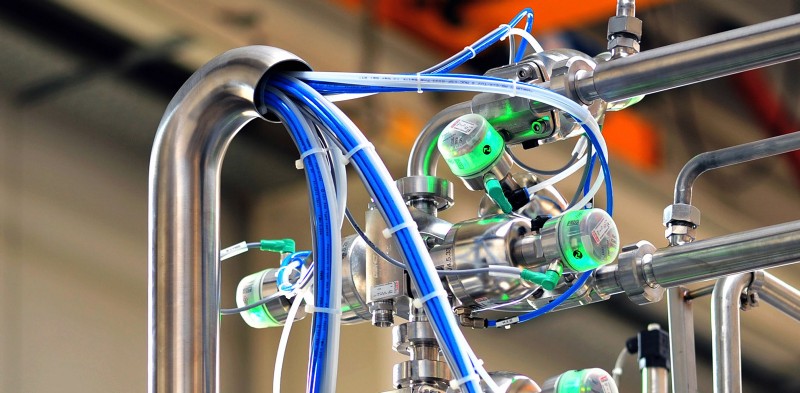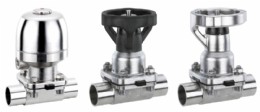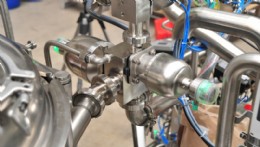GEMÜ - Sterile Valve Application

Eye ointment production line

From left to right: GEMÜ BioStar 650, 653 & 654

GEMÜ M600 valve block with 650 BioStar actuators and 1236 switchboxes (showing SIP steam inlet to block)
In the production of eye ointment, it is vitally important to ensure that the components are mixed correctly and, above all, that they are sterile. For this purpose, the plant includes a vacuum process system including two sequentially switched mixing tanks with speed-controlled agitators. Their task is to mix the fully automated process media gently at a constant pressure and to emulsify them.
In order to avoid boundary layers during the mixing process and to guarantee constant and even consistency, the mixture is withdrawn from the pre-mixer and fed into the final mixer via a sophisticated pipe system.
This ensures that no concentration gradients occur and that the eye ointment is perfectly mixed and to a constant high quality. After preparation is complete, the eye ointment is passed on to storage containers.
Plant Design
For controlling the sterile media, stainless steel aseptic multiport diaphragm valve blocks were selected for feeding the media in the bypass pipe system and for removal of the final product. Cleaning and sterilisation of the whole production line is also integrated into the block valves’ functionality with SIP (Steam in place) valves machined into the blocks. This means that unnecessary deadlegs between the valves can be avoided and welded joints saved. A further special feature is the fully automatic ontrol/monitoring system using fieldbus supported switchboxes.
Solution
All valve functions are combined into the compact multi-port valve blocks (GEMÜ-M600) based on diaphragm valves. The valve blocks are individually designed to meet all requirements during the system planning phase. The GEMÜ BioStar range of actuated and manual valves, such as GEMÜ 650, 653, and 654 are used to operate the valves. All BioStar valves are designed according to Good Manufacturing Practice (GMP) for use in a sterile environment. On top of their safe function, their design also ensures that they can be easily cleaned externally. GEMÜ 1236 switchboxes are mounted on the GEMÜ 650 pneumatic actuators. The current position of the valve is displayed via high visibility LEDs and fed back to the plant control system.
Tel: 01925 824 044
Email: enquiries@gemu.co.uk
Web: www.gemu.co.uk
Published: 18th February 2020
Rachel Wormald, Managing Director at YPS Valves Ltd and Elizabeth Waterman, ...
Are you looking for industry-leading, brand independent valve and actuator ...
As can be seen from the photograph, clearly the resident birds at Bartlett ...
Howco Group has unveiled its latest £1million investment, with the ...
In 2024, Allvalves is poised for an exciting year of growth and expansion, ...
GMM Pfaudler Engineered Plastics & Gaskets are delighted to bring the ...
In the ever-evolving valve industry, GMM Pfaudler stands out for its ...
SAMSON Controls Ltd – part of the SAMSON group - a renowned leader in ...










